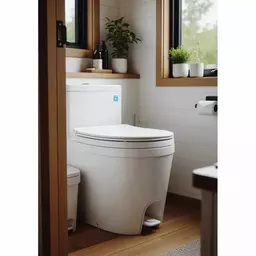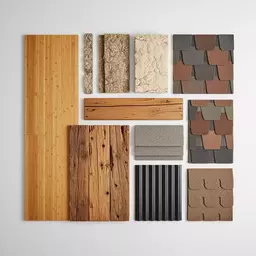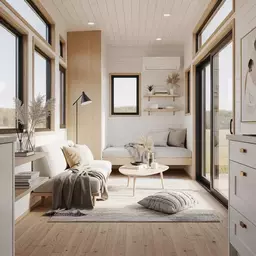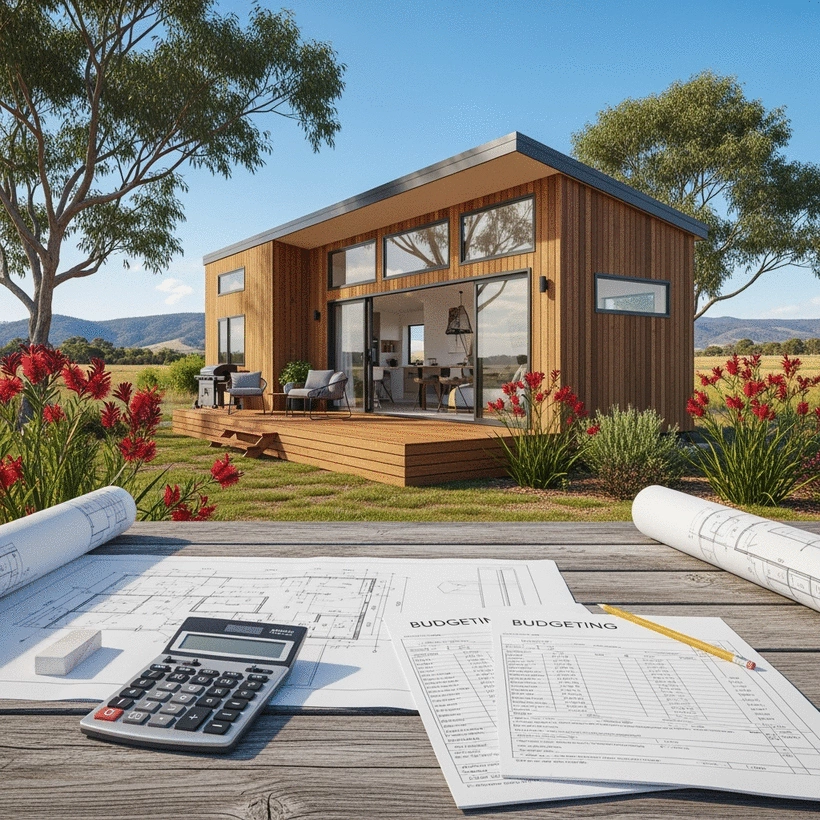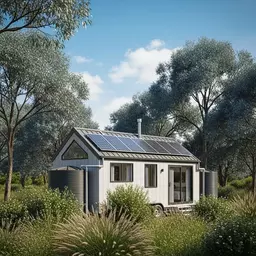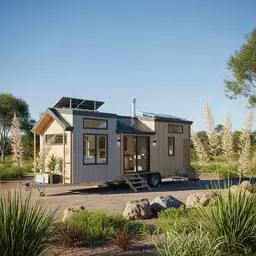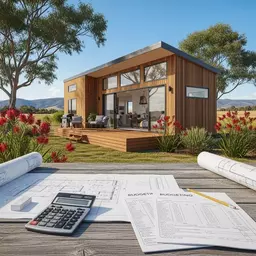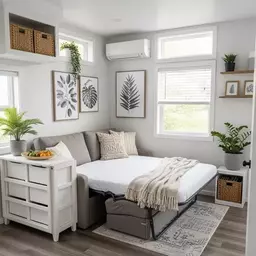Tiny Home Floor Plans Australia 2025
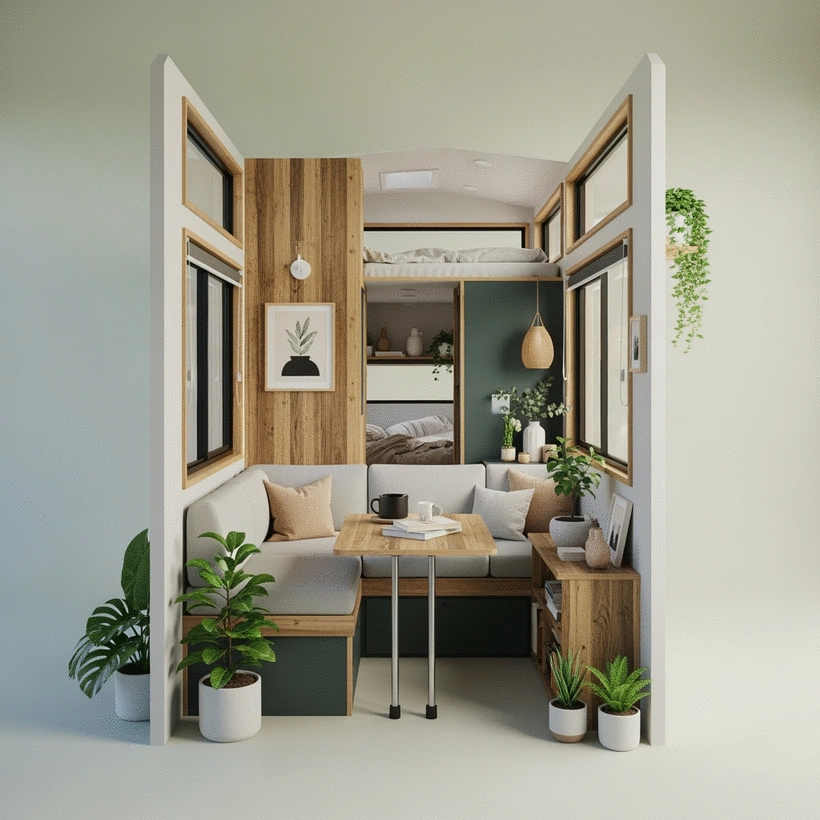
As we approach 2025, the tiny home movement is not just a trend but a sustainable lifestyle choice that resonates with many Australians. Are you ready to explore the possibilities of compact living?
What You Will Learn
- Definition of Tiny Homes: Understand that tiny homes are not only about size but also a philosophy of minimalist living focused on functionality and simplicity.
- Growing Popularity: Discover the rise of tiny homes in Australia driven by the demand for affordable and sustainable housing solutions.
- Benefits of Minimalism: Learn how adopting a minimalist lifestyle can lead to increased mindfulness, deeper connections, and greater financial freedom.
- Sustainable Practices: Explore how tiny homes leverage eco-friendly materials and energy-efficient systems, contributing positively to the environment.
- Community and Support: Find out how engaging with tiny home communities can provide invaluable resources and inspiration for your tiny home journey.
- DIY Opportunities: Get insights into starting your own tiny home project, including budgeting and design considerations.
The Pillars of Tiny Home Living: Core Concepts & Trends for 2025
This visual highlights the defining characteristics of tiny homes, the key drivers of their growing popularity in Australia, and the foundational aspects of the minimalist movement, reflecting trends for 2025.
What Defines a Tiny Home?
- • Compact Design: Typically 10-40 sqm, efficiency focused.
- • Functional Layout: Open plans, maximized usable space.
- • Simplicity: Prioritizing quality over quantity.
- • Sustainable: Eco-friendly materials, energy-efficient.
Rise of Tiny Homes in Australia
- • Affordability: Cost-effective housing solution.
- • Flexibility: Movable, adaptable locations.
- • Environmental Awareness: Reduced carbon footprint.
- • Community Living: Fosters strong connections.
Minimalist Living Philosophy
- • Mindfulness: Intentional consumption and purchasing.
- • Connection: Deeper ties with family and community.
- • Freedom: Reduced costs and clutter.
- • Creativity: Innovative thinking in space design.
Impact of Sustainability
- • Eco-Friendly Materials: Reclaimed wood, recycled metals.
- • Energy Efficiency: Solar panels, efficient appliances.
- • Water Conservation: Rainwater harvesting, low-flow fixtures.
Understanding Tiny Home Living in Australia for 2025
As we look ahead to 2025, the concept of tiny home living is more relevant than ever. At Luxe Tiny Homes, we believe that understanding what defines a tiny home can help you envision the possibilities of this lifestyle. A tiny home typically ranges from 10 to 40 square meters, offering a compact living space that prioritizes functionality and simplicity.
These homes often incorporate creative design elements, ensuring that every inch matters. Many feature open floor plans, utilizing space efficiently with clever storage solutions. As you explore this journey with us, think about how a tiny home could fit into your life—imagine waking up in a space that reflects your values and aspirations!
What Defines a Tiny Home?
A tiny home isn’t just about size; it’s a philosophy centered on minimalist living. Key characteristics include:
- Compact Design: Usually under 40 square meters, focusing on efficiency.
- Functional Layout: Open plans that maximize usable space.
- Simplicity: Fewer possessions, emphasizing quality over quantity.
- Sustainable Practices: Often built with eco-friendly materials and energy-efficient systems.
At Luxe Tiny Homes, we’re dedicated to guiding you through these defining features, helping you find a design that resonates with your vision of sustainability and beauty.
The Rise of Tiny Homes in Australia
The tiny home movement is gaining momentum in Australia, driven by a growing desire for affordable housing and sustainable living. More Australians are discovering the appeal of downsizing, opting for homes that not only reduce their carbon footprint but also offer a unique lifestyle. This shift is fueled by:
- Affordability: Tiny homes present a cost-effective housing solution.
- Flexibility: Many are movable, allowing homeowners to change locations with ease, as seen in various local government initiatives mentioned by Phys.org regarding Australian councils opening doors to tiny houses.
- Environmental Awareness: A focus on sustainability encourages eco-friendly choices.
- Community Living: Tiny home neighborhoods foster a strong sense of community.
As we move toward 2025, expect to see even more interest in tiny homes as they provide innovative solutions for the issues facing housing today. Are you ready to join this exciting movement?
The Tiny House Movement: A Shift Towards Minimalist Living
The Tiny House Movement embodies a broader shift towards minimalism—embracing the idea that less is more. This philosophy encourages individuals to prioritize experiences over possessions, leading to a more fulfilling life. Here’s how this movement is changing the way we think about living:
- Mindfulness: Living in a smaller space encourages mindful consumption and purchasing.
- Connection: Fewer distractions allow for deeper connections with family and community.
- Freedom: Reduced costs and clutter lead to more freedom to travel and explore. For instance, the Queensland Government's planning initiatives for tiny homes provide clearer pathways for these alternative living arrangements.
- Creativity: Designing tiny spaces fosters innovative thinking and creativity.
At Luxe Tiny Homes, we wholeheartedly support this movement, and we’re excited to inspire you to embrace a more minimalist lifestyle. What would living simply mean for you?
We Want to Hear From You!
What resonates with you about tiny home living? Is it the sustainability, the affordability, or the simplicity? Share your thoughts below:
Summarizing the Future of Tiny Homes in Australia
As we look forward to the future of tiny homes in Australia, one thing is clear: the trends of sustainability and space optimization are reshaping our living environments. With a growing awareness of environmental challenges, more Australians are turning to tiny homes as a solution that not only meets their housing needs but also aligns with their values. This shift reflects a significant change in how we approach the concept of home, where less is truly more.
Tiny homes offer a unique opportunity to embrace a lifestyle that prioritizes eco-friendliness and simplicity. As I often share with my community at Luxe Tiny Homes, adopting a minimalist mindset can free us from the clutter that often weighs us down. It’s about creating spaces that are not just functional but also reflective of our personal journeys.
The Impact of Sustainability and Space Optimization
The integration of sustainability within tiny homes is vital for fostering a healthier planet. Here are some critical factors driving this impact:
- Use of Eco-Friendly Materials: Selecting sustainable materials, such as reclaimed wood and recycled metals, reduces waste and supports local economies.
- Energy Efficiency: Tiny homes often incorporate energy-efficient appliances and solar panels, minimizing energy consumption and costs.
- Water Conservation: Many designs feature rainwater harvesting systems and low-flow fixtures, promoting responsible water use.
By prioritizing these elements, tiny homes not only contribute to a better environmental footprint but also enhance the quality of life for their occupants. At Luxe Tiny Homes, we emphasize these sustainable practices in our designs, ensuring that every home contributes positively to its surroundings.
Encouraging a Shift Towards Minimalist Living
The movement towards tiny homes is more than just a trend; it represents a profound shift towards minimalist living. This transformation encourages individuals and families to reassess their priorities and embrace what truly matters. Here are a few ways this shift manifests:
- Decluttering Mindset: Moving to a tiny home often requires letting go of unnecessary possessions, leading to a more intentional lifestyle.
- Enhanced Connection to Nature: Many tiny home designs incorporate natural elements, fostering a deeper relationship with the environment.
- Financial Freedom: Downsizing can significantly reduce living expenses, allowing for greater financial flexibility and less stress. This is a key aspect of the movement, highlighted by the Victorian Government's interest in small and second homes, which includes tiny houses.
As we guide our clients through the tiny home journey, I love witnessing their transformation. Each story is a testament to how embracing minimalism can lead to increased happiness and fulfillment.
Taking the Next Steps Towards Your Tiny Home Journey
Embarking on your tiny home journey can feel overwhelming, but with the right resources and connections, you can turn your vision into reality. At Luxe Tiny Homes, we’re here to support you every step of the way!
Resources for Planning and Building Your Tiny Home
To set yourself up for success, consider these essential resources:
- Building Guides: Access comprehensive guides that cover everything from initial planning to construction.
- Design Inspiration: Explore various floor plans and design styles that align with your personal taste.
- Workshops and Webinars: Attend events that provide hands-on learning and expert insights into tiny home living.
These resources will empower you to make informed decisions and create a space that resonates with your lifestyle.
Connecting with Tiny Home Communities for Support and Inspiration
Building a tiny home is not just about the physical structure; it's also about forming connections with like-minded individuals. Here’s how to get involved:
- Online Forums: Join social media groups and online forums where tiny home enthusiasts share advice and experiences.
- Local Meetups: Attend local gatherings to meet others in the tiny home community who can offer support and inspiration.
- Workshops: Participate in workshops that bring together aspiring tiny home builders to share insights and foster collaboration.
These connections can provide invaluable support as you navigate your tiny home journey. You’re not alone in this endeavor!
DIY Tiny Homes: Starting Your Own Project
If you're ready to roll up your sleeves, the DIY route can be incredibly rewarding. Here are some tips to get started:
- Set a Budget: Determine your budget early on to guide your material and design choices.
- Research: Gather ideas and learn from others who have built their tiny homes to avoid common pitfalls.
- Start Small: Consider beginning with a simple design or a small project to build your skills and confidence.
Creating your own tiny home can be a fulfilling adventure that not only transforms your living space but also deepens your connection to the minimalist lifestyle.
Frequently Asked Questions (FAQs)
- What defines a tiny home?
- A tiny home is typically a dwelling ranging from 10 to 40 square meters, characterized by compact and functional design, a focus on simplicity, and often incorporating sustainable practices.
- Why are tiny homes gaining popularity in Australia?
- Tiny homes are popular in Australia due to their affordability as a housing solution, flexibility (many are movable), reduced environmental footprint, and the strong community living aspects they foster.
- What is the minimalist living philosophy in the context of tiny homes?
- Minimalist living in tiny homes emphasizes mindfulness in consumption, deeper connections with family and community, financial freedom through reduced costs and clutter, and creative problem-solving in space design.
- How do tiny homes contribute to sustainability?
- Tiny homes contribute to sustainability through the use of eco-friendly materials (e.g., reclaimed wood, recycled metals), energy-efficient systems (e.g., solar panels, efficient appliances), and water conservation methods (e.g., rainwater harvesting, low-flow fixtures).
- Where can I find support and resources for my tiny home journey?
- You can find support and resources through online forums and social media groups, local meetups for tiny home enthusiasts, workshops, and comprehensive building guides and design inspirations.
Recap of Key Points
Here is a quick recap of the important points discussed in the article:
- Compact Design: Tiny homes typically range from 10 to 40 square meters, emphasizing efficient space usage.
- Sustainability Focus: Many tiny homes are built with eco-friendly materials and energy-efficient systems, contributing to a reduced carbon footprint.
- Minimalist Living: The tiny home movement encourages a decluttering mindset, fostering deeper connections with family and nature.
- Affordability and Flexibility: Tiny homes provide a cost-effective housing solution and the ability to relocate with ease.
- Community Living: Tiny home neighborhoods promote a strong sense of community and shared values.
